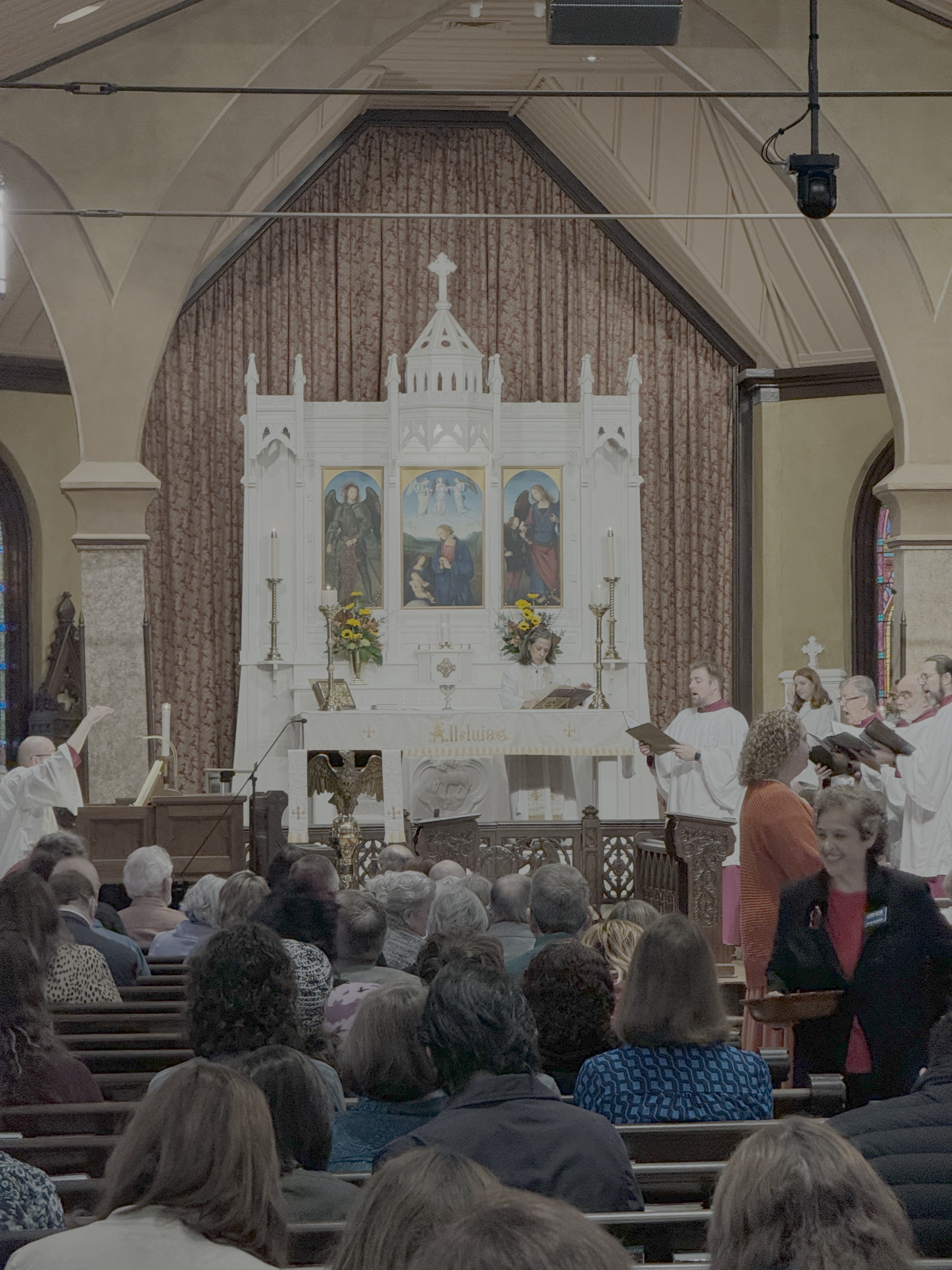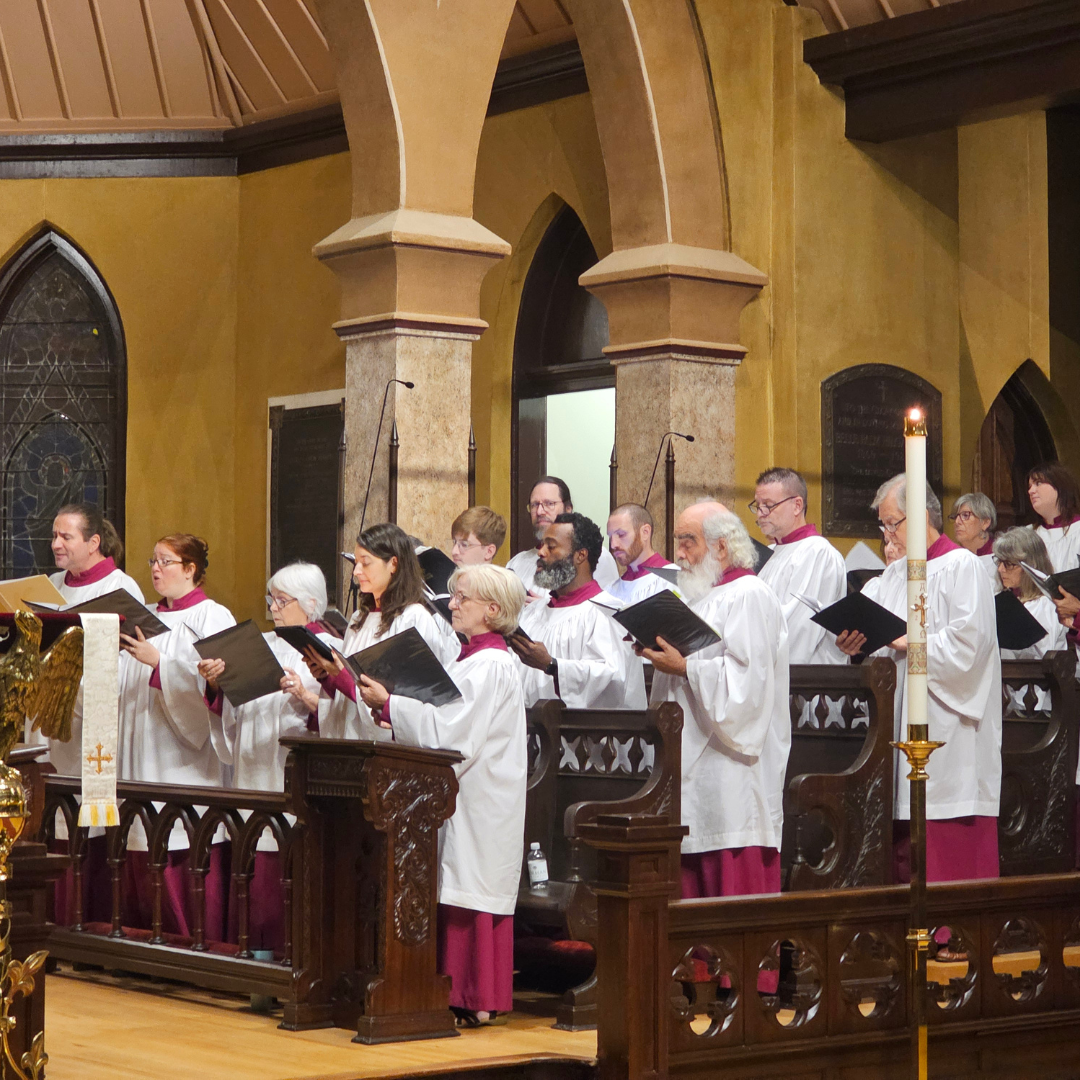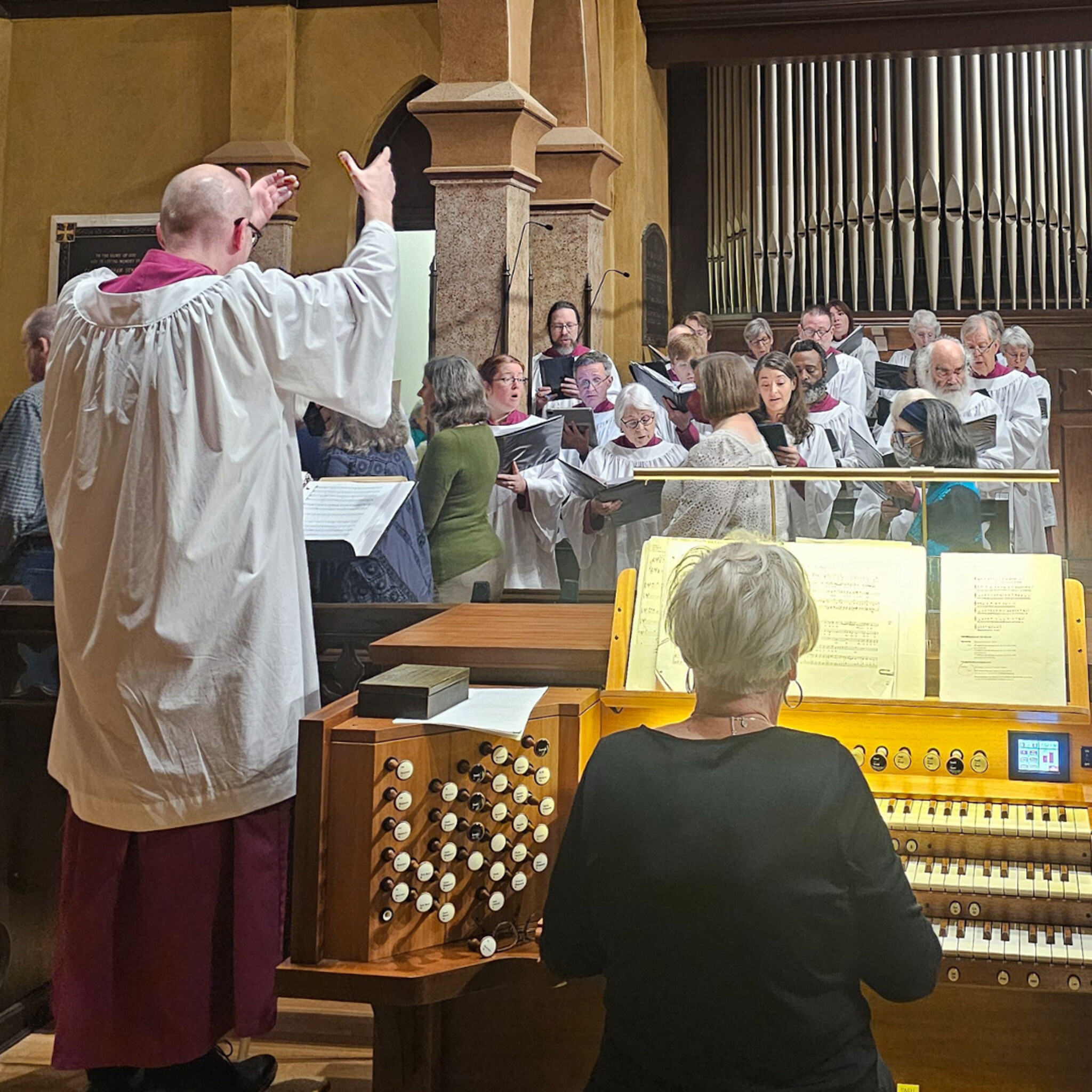
The popular Advent and Christmas services of Lessons and Carols focus on the salvation story leading up to the Nativity of Our Lord. We’ll hear the rest of the account of Jesus’s early life at Lessons and Carols for Christmastide on Sunday, January 5.
Many of the episodes surrounding Our Lord’s birth have their own feast days: the Annunciation (March 25) and Visitation (May 31); the Holy Name (January 1) and Presentation (February 2); the Holy Innocents (December 28) and the Epiphany (January 6). Given holiday schedules, it’s easy to miss some of these feasts. On the other hand, when there is a second Sunday after Christmas Day (that is, when there are two Sundays between Christmas and the Epiphany, January 6), the Book of Common Prayer offers three choices for the Gospel: the Visitation of the Magi, the Flight into Egypt, or the Finding of Jesus in the Temple.
I have therefore constructed this service to take in the Nativity, Holy Name, Presentation and Purification, Visitation of the Magi, Flight into Egypt and Slaughter of the Innocents, and Finding of Jesus in the Temple. Since this is the only liturgy on this day, the Lessons and Carols will serve as an expanded Liturgy of the Word for the celebration of the Holy Eucharist; the Bidding Prayer that usually begins Lessons and Carols has been reworked to serve as the Prayers of the People.
We begin with James Montgomery’s hymn ‘Angels, from the realms of glory’, which encompasses not only the Nativity (angels and shepherds) and the Epiphany (the Magi), but also the Presentation of Our Lord and Purification of his Mother:
Saints before the altar bending,
watching long in hope and fear,
suddenly the Lord, descending,
in his temple shall appear...
These saints are, of course, the aged Simeon and Anna, who had spent their lives awaiting the coming of the Messiah and finally see the Lord appearing in his temple (a reference to Malachi 3). They are also we, and Christians of all ages, who are simultaneously promised the same at the end of all things (as the original context of Malachi makes clear).
The account of the naming and circumcision of Our Lord is followed by an anthem setting of William Walsham How’s hymn ‘Jesus, Name of wondrous love’ [252]. (How was also the author of ‘For all the saints’ and two other hymns in the Hymnal.) Contemporary composer Robert Powell set the text gracefully in a quasi-Baroque style involving much imitation and interplay beween the two voice-parts.
Returning to the Presentation, a hymn specifically for the feast, ‘O Zion, open wide thy gates’ [257], is sung on this occasion to the familiar tune ‘St Botolph’. This 17th-century Latin hymn mostly recounts the narrative, focusing on the perceptive and contemplative responses of the Blessed Virgin, Simeon, and Anna, but it first announces that Christ, the Truth, both ‘priest and victim’, has come. The first two lines are somewhat obscure but may refer to, among other passages of Scripture, the LORD’s promise in Jeremiah 17 and 22 that, if the Sabbath is kept holy by ensuring no burdens are carried through the closed gates of Jerusalem on that day, ‘then there shall enter by the gates of this city kings who sit on the throne of David’. (The author may well also have in mind the virgin birth, to which this symbolism has often been applied.)
‘Earth has many a noble city’ [127] consists of a few stanzas taken from a long ‘Hymn of the Epiphany’, one of a set of twelve devotional poems written around the year 400 by the Spanish Roman poet Marcus Aurelius Clemens Prudentius (‘Of the Father’s love begotten’ [82] also comes from this collection). The fourth stanza of the Hymnal text shows that already by the end of the third century the gifts of the Magi had been given symbolic interpretations:
Sacred gifts of mystic meaning:
incense doth their God disclose,
gold the King of kings proclaimeth,
myrrh his sepulcher foreshows.
For Episcopalians, the pairing of the tune ‘Stuttgart’ with this hymn creates a welcome echo of Advent, when the same tune is used to sing ‘Come, thou long-expected Jesus’: neat bookends for the season as the promises of Advent are fulfilled.
A modern hymn reflects upon the Slaughter of the Innocents. ‘In Bethlehem a newborn boy’ [246], by Rosamond Herklots (author also of ‘Forgive our sins as we forgive’ [674]), simply yet effectively ties this horrific act to all-too-familiar episodes in our own and every age in which fear – in this case on the part of an insecure despot – begets hate and then violence. The author goes on, though, to affirm boldly the ‘wonder of [Christ’s] cross: the love that cannot cease to bear / our human anguish everywhere’ and to pray that this love may triumph in the world and in our hearts. Wilbur Held’s simple, plaintive tune supports the text beautifully.
The account of the Finding of Jesus in the Temple is followed by ‘When Jesus left his Father’s throne’ by the aforementioned James Montgomery. This hymn, entitled ‘Children recalling Christ’s example and his love’, indeed recounts Our Lord’s interactions with children (blessing those brought to him; being hailed by them at his Triumphal Entry) but begins with references to his own childhood and this episode in particular:
Like him may we be found below,
in wisdom’s path of peace;
like him in grace and knowledge grow
as years and strength increase.
Most of the rest of the music for this service returns to focus on the Visitation of the Magi in a look forward to the Feast of the Epiphany on the next day. An evocative arrangement of the familiar ‘We three kings of Orient are’, and the singing of the three middle stanzas by soloists representing the three Magi, as originally intended, attempt to move beyond the picturesque tune and highlight the symbolic meanings of the Magi’s gifts.





Login To Leave Comment